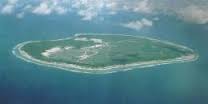As a technologist promoting practical ICT in developing regions, I am still surprised that Raspberry Pi computers have failed to reach these regions of the world. As an affordable, small, low power-usage computer that can help teach basic computer and programing skills, it seems a perfect fit to aid in STEM-related advancement in developing states. In the West we know that over 8 million of these tiny computers have been sold and now there are +65 clone versions. Including the clones, Banana Pi, Orange Pi, Beagle Bone, Pine64, Odroid, etc., the number must exceed 15 million devices to date.
Six Reasons Why Raspberry Pis are Perfect for Developing Regions:
- Cost effective: all of the required hardware costs about $65 total.
- Power efficient: Even with the WiFi running, total system power usage currently sits around 500mA: about the same as today’s smart phone, and it uses the same micro-usb charger as the phone.
- Open source: Raspberry Pi runs a version of the Linux OS, it can use the free and extremely useful code already out there for LAMP stacks.
- Robust Community Support: Raspberry Pi already has a large and amazing user and programing community supporting this hardware. They are always thinking of new ways to improve the hardware and software to better suit the needs of developing regions.
- Improved Security: very low cost way to set up department and personal firewalls.
- No Moving Parts: Fewer Parts and no spinning pieces means reduced chance of failure due to factors such as extreme weather and intermittent power.
Raspberry Pi 3 with clones and their different form factors. (SBC – Small Board Computer) These are SBC’s that I own and have tested.
Back to Nauru, I had the opportunity to hold a small Raspberry Pi introduction class to the government ICT office in April 2016. The introduction included a short slide show and then hands-on setup of four RPi 3’s. The hands-on portion focused on connecting and setting up the RPi first as a desktop then as a server. The ICT office in Nauru often gets request for a small server to support the internal needs of another department. The process creates a ton of paper work, from assessing user needs, to evaluating software skills/needs, and then making a formal request for quotes on a “data center class” server. Many times the requesting department would just like to see an example of how a web server could be used to support their department, not go through a 6 month-long process and then wait 6 more months to get a server on island, set up, etc.
We were able to set up the Raspberry Pi 3 as a server with Apache in a LAMP stack, and add a sample web page, in 15 minutes. So, in a quarter of an hour it was possible to have a server set up, connected to the internal network, and show how a web site would look and work for a government department. The two ICT department interns were amazed and were very excited to get a Raspberry Pi for their own use and experimentations.
The slides I used: An-introduction-to-the-Raspberry-Pi-1
Background Photos
Where is Nauru? Just about a five hour flight from Brisbane, AU
Photo from the plane, the small remote island of Nauru, you can walk around the island in about 4 hours on the ring road.
Calm ocean waters around Nauru.





Hello,
Kudos for the amazing work in the field of Green IT!
we have developed a solar powered wi-fi mesh AP solution using openwrt and batman. the power budget of the AP is around 7.2W peak which is supplied by a 40watt panel coupled with a 12V-12AH battery. The system is live in over 150 villages in rural India and growing and is being deployed as a community network.
Do let me know if there is an opportunity to synergise.